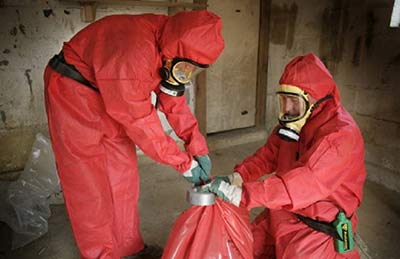According to figures from the Health and Safety Executive (HSE), the UK had 2,523 deaths in 2017 alone from mesothelioma, a cancer of the lining of the organs caused almost exclusively by the inhalation of asbestos fibres. Asbestos is made of microscopic fibres that cannot be seen easily by the naked eye. In order to identify it, you need to know what materials to investigate, locate manufacturer labels, and always be certain to consult experts when in serious doubt.
Analyse Joints or other types of Fixtures
On the outer layer of buildings, asbestos sheets were often linked together with aluminium runners. These runners were joined by small nails with no point at the end. On the inside, asbestos sheets were held together with plastic or wooden runners in the same way. If you become aware that the building in question is characterised by this design, then it is likely tainted by asbestos.
Ceiling tiles were another product that were often manufactured from asbestos, as well as fire-breaks, walls and doors, and structural steel columns. Older fire doors often contained an asbestos laced panel within the leaf and the material was also used as a header to fill the void between the top of the door frame and the ceiling as it is a highly heat resistant material, a very desirable trait when it comes to fire door construction.

Other tips on how to identify asbestos in your home or work environment include simply observing the surface patterns of the materials in question. Asbestos materials often have a pattern on the surface that appears to have shallow indentations or dimples covering the surface. Later materials have a more consistent and smooth finish.
While becoming educated on the more obvious signs on asbestos exposure, the most certain method is to always have the site inspected by a licensed professional.






